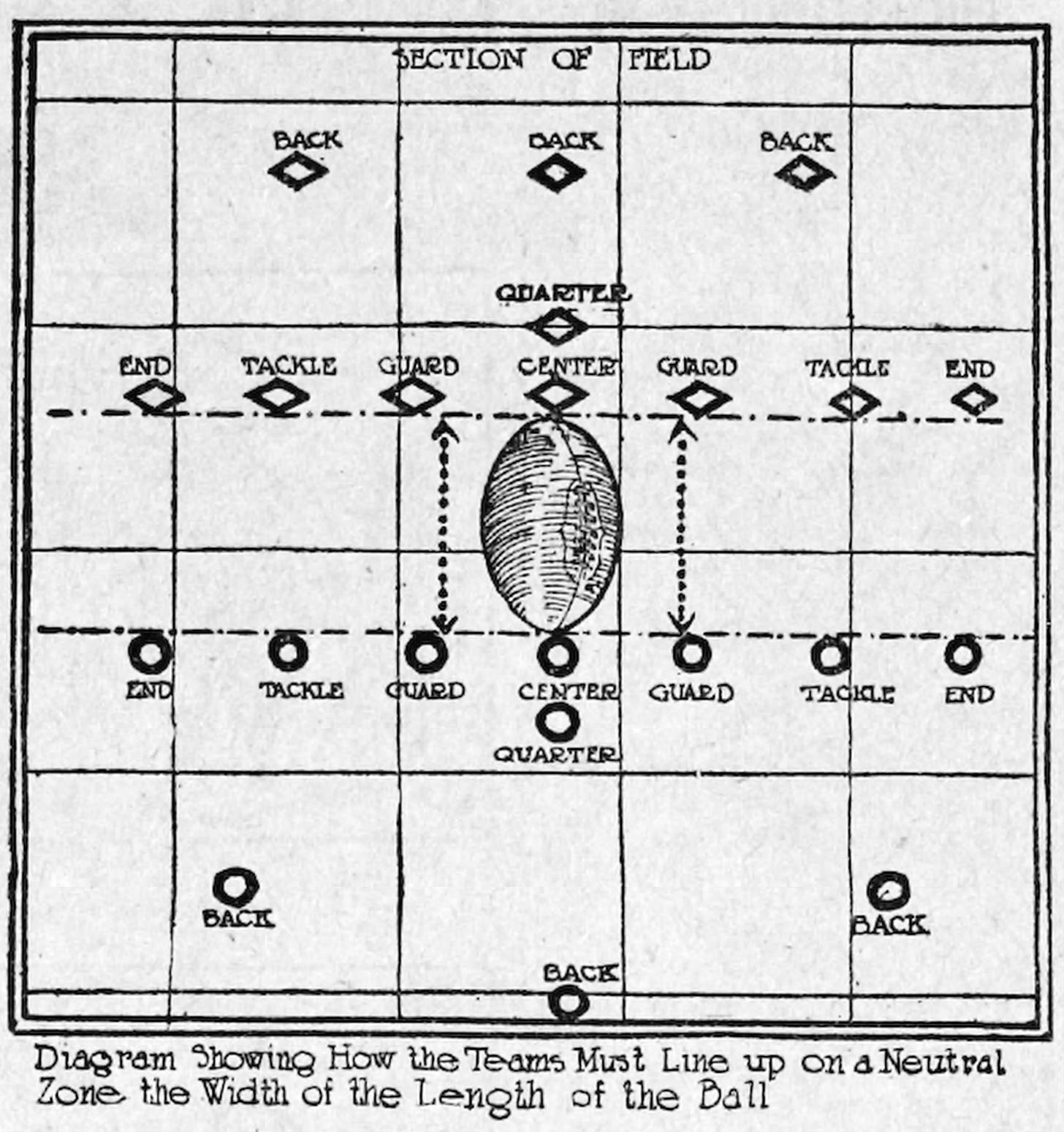Today's Tidbit... Introducing The Neutral Zone
With football's scrimmage coming from rugby's scrum, early football allowed players on defense to interfere with the snapper and the other forwards on the offense's front wall. Later, those tactics became illegal, and by 1905, the following rules were in place.
Rule 16a: The snapper-back is entitled to full and undisturbed possession of the ball. The opponents must neither interfere with the snapper-back nor touch the ball until it actually put in play.
Rule 18b (partial): The line of scrimmage is an imaginary line passing through the front point of the ball.
Despite those rules, centers and other offensive linemen were pushed or slapped, partly because the game had only one line of scrimmage. With the offense and defense lining up close to the front of the ball, blocking the linesman's view, he could not see defensive players reaching across the line. Likewise, detecting movement on the line and players aligning offside was difficult.
To eliminate this problem, the rule makers of 1906 gave football a second line of scrimmage and created a neutral zone.
Rule 5c:The line of scrimmage for each side is an imaginary line parallel to the goal line and passing through the front point of the ball nearest the side's own goal. Note 1: It follows that there are two lines of scrimmage, one for each team.
Given all the rule changes in 1906, columnists wrote article after article reviewing the new rules and their expected impact on the game. John B. Foster was one of those columnists, and one of his pieces included the following illustration to help people understand the new world of dual lines of scrimmage.

The new rules worked. Linesmen could better see players along the lines of scrimmage, including those on the opposite side of the snapper. Thankfully, those preparing the 1908 yearbook at Dartmouth appreciated and documented the difference in the linesman's view with before and after perspectives. Eliminating the crowd over the ball improved the line of sight and eliminated some elements of dirty play from the game.
Also, while not directly related to the neutral zone issue, Foster's article included another illustration showing the dos and don'ts of centers holding the ball before the snap.
Football Archaeology is reader-supported. Click here to buy one of my books or otherwise support the site.




